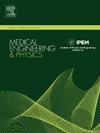Improved U-Net based on ResNet and SE-Net with dual attention mechanism for glottis semantic segmentation
IF 1.7
4区 医学
Q3 ENGINEERING, BIOMEDICAL
引用次数: 0
Abstract
In previous tasks of glottis image segmentation, the position attention mechanism was rarely incorporated, neglecting the detailed information in glottis position detection. Aiming to improve the U-Net architecture, this study introduces the dual attention mechanism based on the squeeze and excitation (SE)-Net model. This mechanism can integrate traditional channel attention with position attention mechanisms to effectively adjust the weights of crucial features and significance of positions. Replacing the weight adjustment mechanism in SE-Net with the dual attention mechanism creates a broader perspective, enhancing the sensitivity to important features in the model. Furthermore, based on the characteristics of SE-Net, the skip-connection feature of U-Net can still be retained. The architecture proposed in this paper further replaces the convolutional layers in the U-Net encoder with the bottleneck to preserve the information on the features without significantly increasing the amount of computation. In addition, the decoder is replaced with residual blocks to reduce overfitting. The results of the experiment showed that models with retained features demonstrate better accuracy while reducing overfitting. The proposed model achieved positive results in predicting the scores on the public benchmark for automatic glottis segmentation (BAGLS) dataset.
求助全文
约1分钟内获得全文
求助全文
来源期刊

Medical Engineering & Physics
工程技术-工程:生物医学
CiteScore
4.30
自引率
4.50%
发文量
172
审稿时长
3.0 months
期刊介绍:
Medical Engineering & Physics provides a forum for the publication of the latest developments in biomedical engineering, and reflects the essential multidisciplinary nature of the subject. The journal publishes in-depth critical reviews, scientific papers and technical notes. Our focus encompasses the application of the basic principles of physics and engineering to the development of medical devices and technology, with the ultimate aim of producing improvements in the quality of health care.Topics covered include biomechanics, biomaterials, mechanobiology, rehabilitation engineering, biomedical signal processing and medical device development. Medical Engineering & Physics aims to keep both engineers and clinicians abreast of the latest applications of technology to health care.
 求助内容:
求助内容: 应助结果提醒方式:
应助结果提醒方式:


